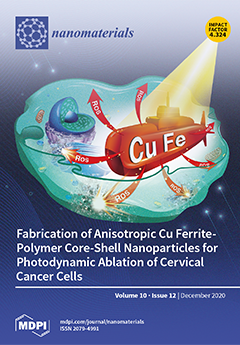This study focuses on the development of a nanosupport based on halloysite nanotubes (HNTs), Fe
3O
4 nanoparticles (NPs), and thiolated chitosan (CTs) for laccase immobilization. First, HNTs were modified with Fe
3O
4 NPs (HNTs-Fe
3O
4) by the coprecipitation method. Then, the HNTs-Fe
3O
4 surface was tuned with the CTs (HNTs-Fe
3O
4-CTs) by a simple refluxing method. Finally, the HNTs- Fe
3O
4-CTs surface was thiolated (-SH) (denoted as; HNTs- Fe
3O
4-CTs-SH) by using the reactive NHS-ester reaction. The thiol-modified HNTs (HNTs- Fe
3O
4-CTs-SH) were characterized by FE-SEM, HR-TEM, XPS, XRD, FT-IR, and VSM analyses. The HNTs-Fe
3O
4-CTs-SH was applied for the laccase immobilization. It gave excellent immobilization of laccase with 100% activity recovery and 144 mg/g laccase loading capacity. The immobilized laccase on HNTs-Fe
3O
4-CTs-SH (HNTs-Fe
3O
4-CTs-S-S-Laccase) exhibited enhanced biocatalytic performance with improved thermal, storage, and pH stabilities. HNTs-Fe
3O
4-CTs-S-S-Laccase gave outstanding repeated cycle capability, at the end of the 15th cycle, it kept 61% of the laccase activity. Furthermore, HNTs-Fe
3O
4-CTs-S-S-Laccase was applied for redox-mediated removal of textile dye DR80 and pharmaceutical compound ampicillin. The obtained result marked the potential of the HNTs-Fe
3O
4-CTs-S-S-Laccase for the removal of hazardous pollutants. This nanosupport is based on clay mineral HNTs, made from low-cost biopolymer CTs, super-magnetic in nature, and can be applied in laccase-based decontamination of environmental pollutants. This study also gave excellent material HNTs-Fe
3O
4-CTs-SH for other enzyme immobilization processes.
Full article






